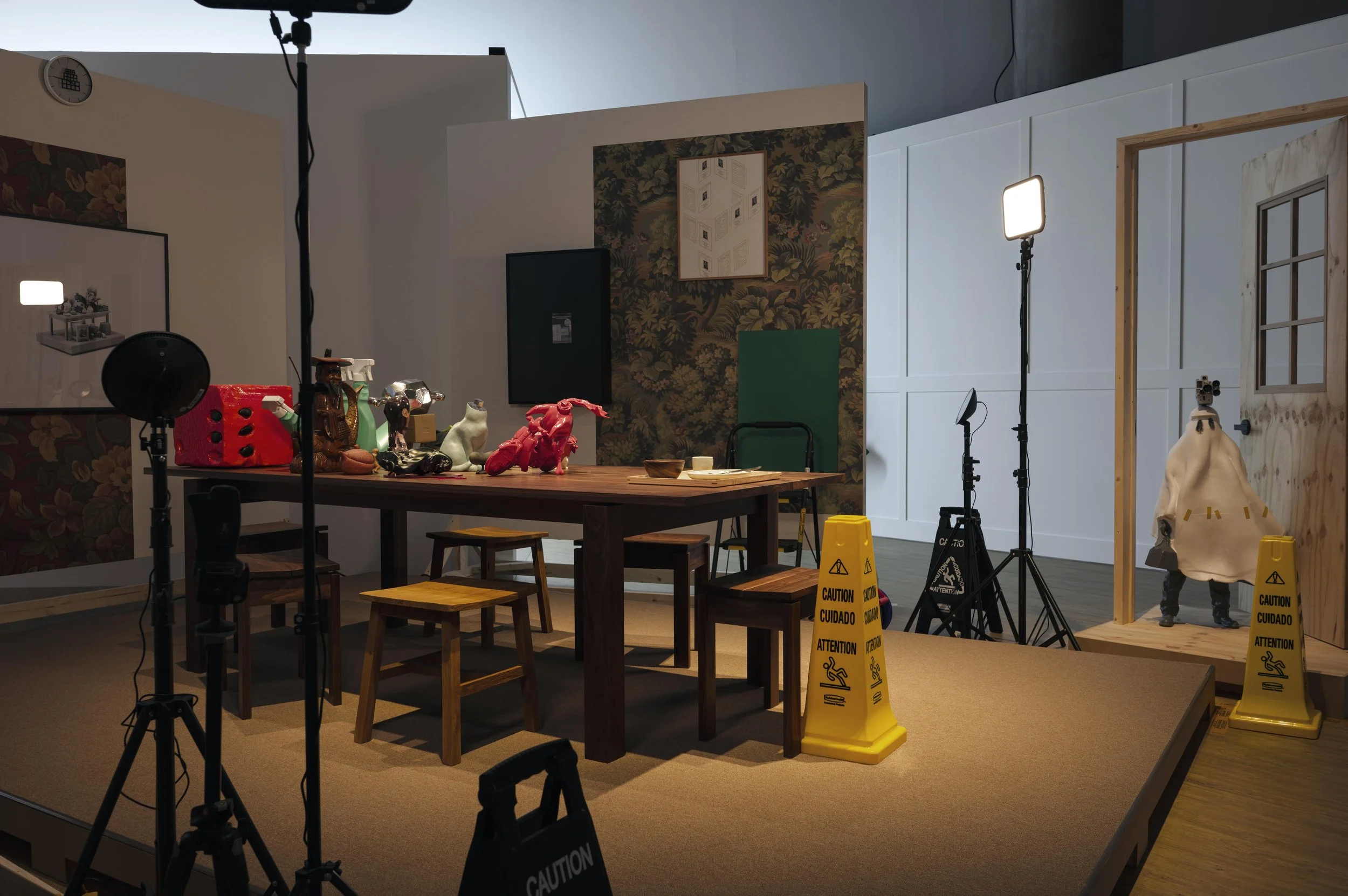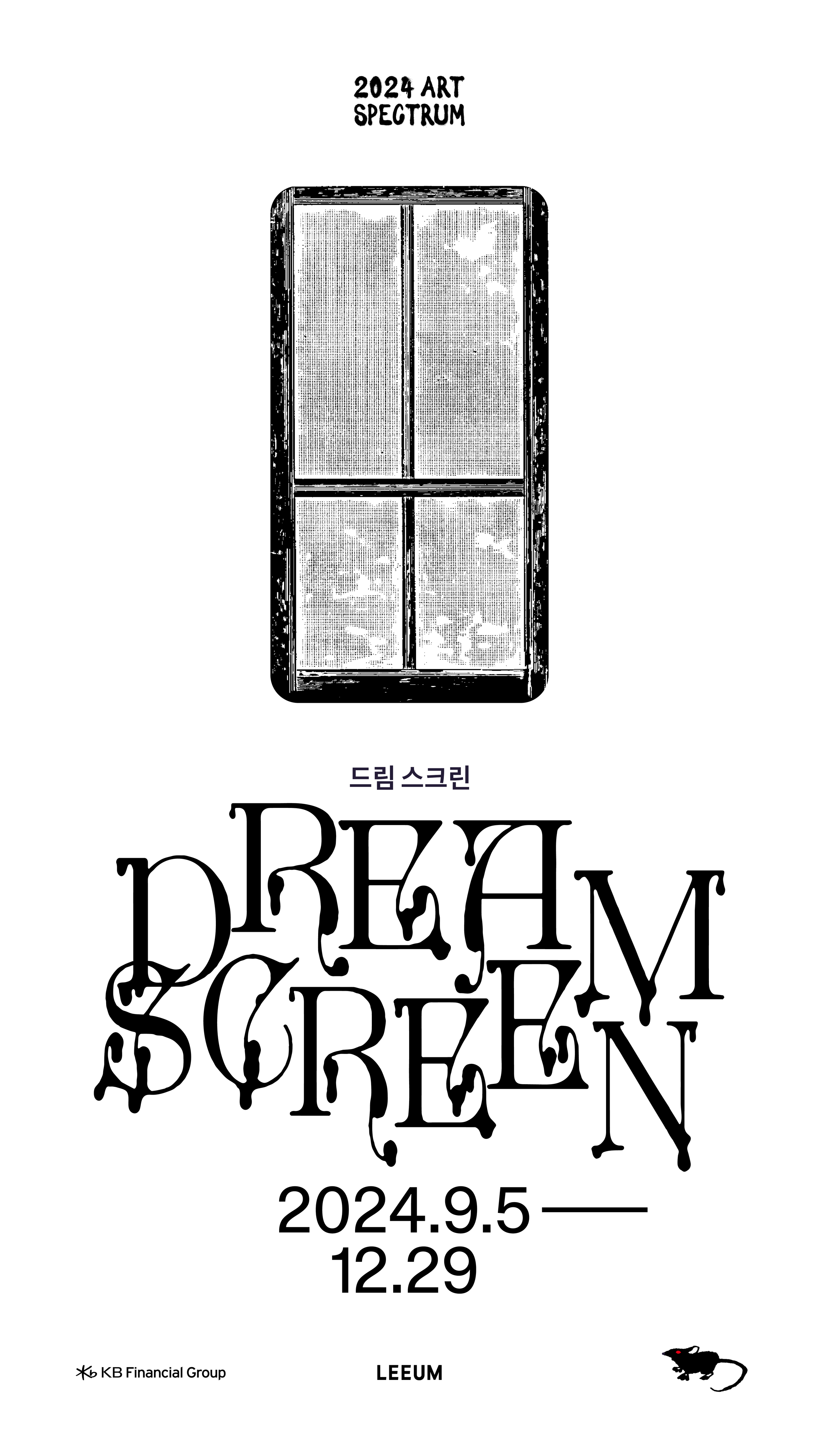2024 Art Spectrum
Dream Screen
5 September - 29 December, 2024
Leeum Museum of Art, Seoul
Participating artists: Yun Choi, Sunpil Don, Dahwan Ghim, Priscilla Jeong, Kang Jungsuck, Heecheon Kim, Muyeong Kim, Jihyun Jung, Kolown, Eunsae Lee, Li Yi-Fan, Soe Yu Nwe, Syeyoung Park, Part-time Suite, Riar Rizaldi, Kornkarn Rungsawang, Hansol Ryu, Sparkling Tap Water, Kamonlak Sukchai, Sundialll, Fuyuhiko Takata, Arlette Quynh-Anh Tran, Bo Wang, Vivien Zhang, He Zike, Stella Zhong
Co-curated with Rirkrit Tiravanija and Hyo Gyoung Jeon
Exhibition
Programs
Publication
기획전 《드림 스크린》은 밀레니얼 이후 세대가 인터넷, 게임, 영화 등 ‘스크린’이라는 매개체를 통한 경험을 체화하면서 물리적인 세계에 대해 이전과는 다른 감각을 갖게 된 점을 그 출발점으로 삼는다. 전시 제목인 “드림 스크린”은 허구적이지만 보다 깊은 무의식의 영역을 드러내는 ‘꿈’과 직간접적인 경험을 중개하는 다종다양한 ‘스크린’을 합성한 표현이자, 스크린 너머로 떠오르는 환상이나 잔상을 의미하는 조어다. 거대 서사 혹은 선형적인 성장 신화가 더 이상 미래에 대한 뚜렷한 비전을 제시하지 못할 때, 새로운 세대가 매체를 경유한 경험과 파편적인 잔상으로부터 삶의 조건을 탐색하고, 자신만의 이야기를 개척해 가는 다양한 경로를 살펴보고자 한다.
이번 전시는 특히 스크린을 통해 접하는 광범위한 정보와 감각 자극, 그리고 다중적 서사를 통해 구성, 공유되는 공포를 중점적으로 다룬다. 이때 공포는 직접 마주한 현실과 거리가 있는 허구인 한편 주어진 현실의 조건을 파악하고 재구성하는 통로가 되기도 한다. 《드림 스크린》은 이처럼 가공된 공포를 시대적 징후로 보고, ‘윈체스터 하우스(Winchester House)’라는 ‘귀신 들린 집’을 모티프 삼아 펼친다. 19세기 후반에 지어진 미국 산호세 소재 윈체스터 하우스는 총기 사업으로 부를 일군 윈체스터 가의 부인이 총기로 인해 사망한 이들의 혼이 자신을 찾아오지 못하도록 복잡하고 독특한 구조로 지은 것으로 잘 알려져 있다. 블랙박스와 그라운드 갤러리에서 펼쳐지는 《드림 스크린》은 마당, 입구, 복도, 20여 개의 독립적인 방으로 구성된다. 방에서 방으로 이어지는 구성은 각 작가의 실천을 밀도 있게 보여줄 뿐만 아니라 다양한 의미 체계가 공존하는 오늘날의 시대상을 재고한다. 마치 미로 사이로 길을 찾는 듯한 동선은 젊은 세대가 경험하는 방향성의 상실과 고립감을 반영하는 동시에 관객에게 각자만의 길을 찾아 작품을 감상하는 새로운 경험을 제시한다.
이번 전시의 참여 작가는 각자의 지역적 특징과 문화를 기반으로 인터넷, 서브 컬쳐, 게임, 대중 문화 등을 접하며 성장한 세대에 속한다. 총 작품 60점 중 23점은 이번 전시에서 처음 소개되는 신작이다. 미래에 대한 굴절되고 산란된 이미지를 앞두고 예술적 실천을 이어가는 이들은 각자의 방에서 역사적 유산을 동시대적으로 해석하거나 바깥 세계에 접속하는 경로인 동시에 그 자체로 하나의 세계인 스크린 안팎을 왕복하고, 개인이 물리적, 심리적으로 고립되는 세계에서 맺을 수 있는 다양한 관계의 모습을 탐색한다. 《드림 스크린》는 이러한 실천을 한 자리에 모아 각 작품이 내재한 시공간을 가로지른 모험을 펼친다.
2024 Art Spectrum Dream Screen departs from the idea that artists in the Millennial and Post-Millennial generations have come to perceive the physical world differently in an era where experiences mediated through screens—the internet, games, films—have increasingly become commonplace. The title “Dream Screen” is a neologism that combines the dream, a fictional realm that is nevertheless a poignant indicator of the subconscious and the screen through which (in)direct experiences take place. It also refers to a device that facilitates fantastical remnants behind the screen. Taking this term for its title, the exhibition presents how the new generation of artists navigate the conditions of life and weave together their own stories based on screen-mediated experiences and fragmentary afterimages when the grand narrative and the myth of linear progress no longer provide a reliable prospect for the future.
The exhibition focuses on horror, constructed and shared through the screen constantly overloaded with information, sensory stimuli, and narratives. Horror, in this sense, is removed from reality yet operates as a channel that allows for an understanding and reconstruction of the conditions of reality. As a reflection of this symptomatic horror, the exhibition adopts the structural motif of the notoriously “haunted” Winchester House. Built in the late 19th century, this house in the US city of San Jose was designed by the matriarch of the Winchester family—which had earned its wealth through firearms—with an intricate and unpredictable structure so that the spirits of the weapons’ victims would not haunt her. Inspired by the complex structure of this piece of architecture, a house is built across the Leeum Museum of Art’s Black Box and Ground Gallery, with a courtyard, entrance, hallways, living room, and around 20 other independent rooms. The path through this structure is like finding one’s way through a maze—a reflection of the loss of direction and sense of isolation of this generation, as well as an opportunity for the viewers to navigate across a myriad of artwork.
The participating artists belong to a generation that grew up encountering the internet, subcultures, games, and popular culture with a foundation in the Asian region’s local contexts and cultures. Twenty-three of the sixty artworks are commissioned works premiering in this exhibition. Unfolding their artistic practice in the face of the refracted and scattered image of the future, they reinterpret historical heritage through a contemporary lens, oscillate between the world(s) across various screens, and explore how to be together in a time of physical and psychological isolation. Presenting these stories individually yet together, the exhibition allows a multitude of pathways across a fabric of varying time(s) and space(s).







